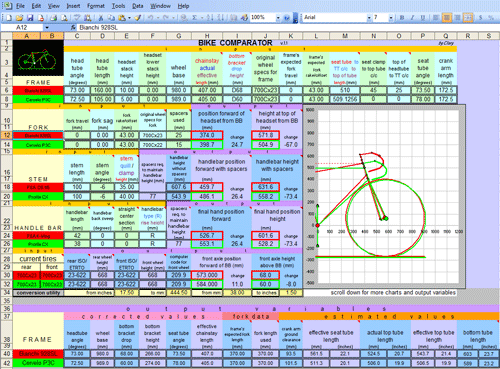

This all changed through the ’90s as MTB frames became lower and more BMX-like with longer seatposts. As a result it offered a good indication of the fit and sizing on any bike. So if a bike had a 22-inch seat tube, it was a pretty safe bet the top tube was similar in length. Way back in the ’80s, MTB geometry was heavily based on road bikes frames were more or less ‘square’ with the top tube parallel to the ground and the top tube a similar length to the seat tube. It used to be the defining measurement when it came to bike sizing. This is generally taken from the centre of the bottom bracket (where the cranks go through) to the top of the seat tube (where the seatpost exits the frame). So what are the commonly seen metrics, which are the most important and how do they interact with each other? Do all this and you’ll still be guessing, but at least it’ll qualify as an educated guess! You need to look at whole range of measurements and consider how they interrelate.
Frame geometry calculator full#
Well it may, but looking at one digit in isolation isn’t going to paint the full picture.

You’ll commonly hear people say that a bike will do this or that because it has a 65-degree head angle. It mightn’t seem as exciting as an all-new suspension linkage, or as visually obvious as a top-end Eagle 12-speed drivetrain, but frame geometry can make or break any bike from the outset.Įxperienced mountain bikers already know that frame geometry is important but it’s a very complex topic. Read any of our bike reviews and you’ll notice we bang on a lot about frame geometry.


 0 kommentar(er)
0 kommentar(er)
